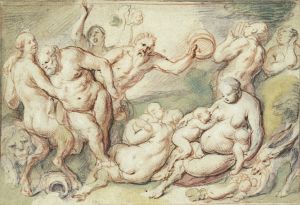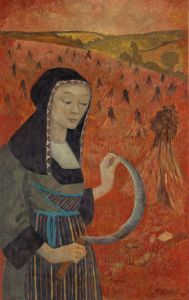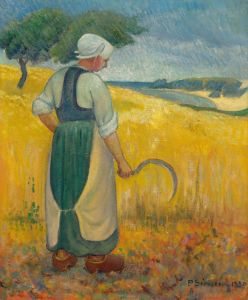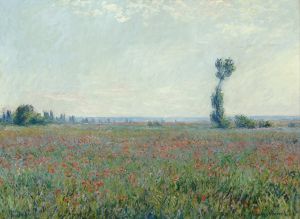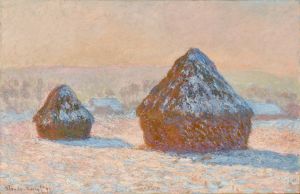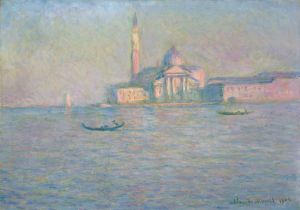
Stack of Wheat
A hand-painted replica of Claude Monet’s masterpiece Stack of Wheat, meticulously crafted by professional artists to capture the true essence of the original. Each piece is created with museum-quality canvas and rare mineral pigments, carefully painted by experienced artists with delicate brushstrokes and rich, layered colors to perfectly recreate the texture of the original artwork. Unlike machine-printed reproductions, this hand-painted version brings the painting to life, infused with the artist’s emotions and skill in every stroke. Whether for personal collection or home decoration, it instantly elevates the artistic atmosphere of any space.
Claude Monet's "Stack of Wheat" is part of a renowned series of paintings created by the French Impressionist artist between 1890 and 1891. This series, often referred to as the "Haystacks" series, consists of approximately 25 canvases that depict stacks of harvested wheat in the fields near Monet's home in Giverny, France. The paintings are celebrated for their exploration of light, color, and atmosphere, as well as their innovative approach to capturing the passage of time.
Monet painted the "Haystacks" series during different times of the day, in varying weather conditions, and across changing seasons. This allowed him to study the effects of light and shadow on the wheat stacks and to document how these elements transformed the landscape. The series exemplifies Monet's dedication to plein air painting, a hallmark of the Impressionist movement, which emphasized painting outdoors to capture the immediacy of natural light and its effects.
The "Haystacks" series is notable for its focus on a single subject, which was relatively unconventional at the time. Monet's decision to repeatedly depict the same motif under different conditions was a deliberate effort to explore the transient qualities of light and atmosphere. This approach reflects his interest in the scientific and artistic study of perception, as well as his desire to convey the ephemeral beauty of nature.
The paintings in the "Haystacks" series are characterized by their vibrant color palette and loose, expressive brushwork. Monet used layers of paint to create texture and depth, capturing the interplay of light and shadow on the wheat stacks and the surrounding landscape. The series demonstrates Monet's mastery of color theory and his ability to evoke mood and emotion through his use of light and color.
The "Haystacks" series was well-received by critics and collectors during Monet's lifetime and remains one of his most iconic and influential bodies of work. Several of the paintings from the series are now housed in major art museums around the world, including the Musée d'Orsay in Paris, the Art Institute of Chicago, and the Metropolitan Museum of Art in New York City.
Through the "Haystacks" series, Monet not only advanced the principles of Impressionism but also laid the groundwork for future artistic movements that would further explore abstraction and the subjective experience of the natural world.





